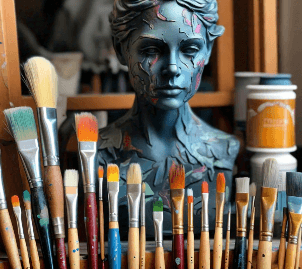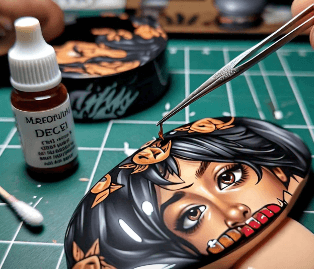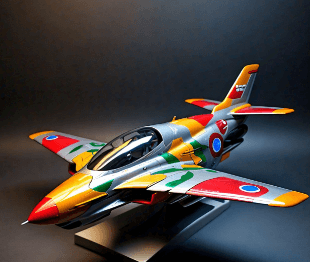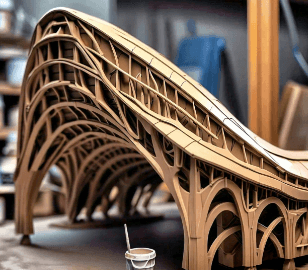Introduction
Are you looking to master the art of building large-scale models? This comprehensive guide covers everything you need, from preparing the model surface to selecting the right paints and applying intricate decals. Whether you are a beginner or an experienced modeler, this guide will help you enhance your skills and create models that look realistic and professional.
1. Start with a Strong Foundation: The Importance of Primer
The journey of building a great model begins with a solid foundation. Most experienced modelers recommend using a primer as the first step. The primer not only creates a smooth base but also enhances paint adhesion, ensuring that the model’s details like panel lines and engravings stand out.
Key Benefits of Using Primer:
- Consistency: Primer helps provide a uniform base, especially if the model is made of different materials like plastic, resin, or metal.
- Defect Detection: It highlights small gaps or imperfections, allowing you to fix them before applying the main paint.
- Enhanced Adhesion: Using a primer reduces the number of paint layers needed for colors like white, yellow, or red.
Pro Tip: Clean the model thoroughly before applying primer. Use a plastic-prep detergent or a damp cloth to remove any dust or grease.
2. Choosing the Right Paint: Acrylic vs. Enamel
Selecting the right paint type is crucial in model building. The two most popular options are acrylic and enamel paints. Each has its own advantages, and the choice largely depends on your preference and project needs.
Acrylic Paints:
- Water-based and easy to clean.
- Safe for indoor use with minimal fumes.
- Ideal for beginners due to its quick drying time.
Enamel Paints:
- Provides a glossy, durable finish.
- Offers better coverage and adhesion, especially on metal surfaces.
- Requires proper ventilation due to strong fumes.
Pro Tip: Always use an OSHA-approved respirator when working with enamel paints to protect yourself from harmful fumes.
3. Mastering the Art of Hand Painting
Even if you prefer airbrushing or spray painting, some parts of the model will require hand painting for detailed touches. Hand painting allows you to highlight tiny details that spray painting might miss.
Tools You’ll Need:
- Medium-sized brush: For base coats and larger areas.
- Fine-point brush: For intricate details and highlights.
- Variety pack: Having different brush sizes will help you tackle all parts of the model.
Pro Tip: Use high-quality brushes to avoid streaks and ensure a smooth finish. Also, thin your paints slightly for better flow and control.

4. Applying Stickers and Decals: Finishing Touches
Stickers and decals can bring your model to life by adding realistic details and markings. The application process requires patience and precision to ensure they look seamless.
Steps for Applying Decals:
- Cut the decal as close to the image as possible.
- Soak it in water for a few seconds until it loosens from the backing paper.
- Slide the decal into place using tweezers and a soft brush.
- Seal it with a clear coat for protection and a polished look.
Pro Tip: Use a decal-setting solution to help the decal conform to the surface, especially on curved parts.

5. Finishing Your Model: The Clear Coat and Display
After all the paint and decals have been applied, it’s time to finish your model with a clear coat. This final layer not only protects the paint and decals but also gives the model a polished appearance.
Types of Clear Coats:
- Glossy Finish: Best for cars and aircraft models for a shiny appearance.
- Matte Finish: Ideal for military models for a realistic look.
- Satin Finish: A balanced look that works well for most models.
Pro Tip: Spray the clear coat in light, even layers to avoid runs and drips.

Conclusion
Building large-scale models is a rewarding and fulfilling hobby that requires patience, skill, and creativity. By following the tips and techniques in this guide, you can create models that not only look professional but also stand the test of time. Happy modeling!

